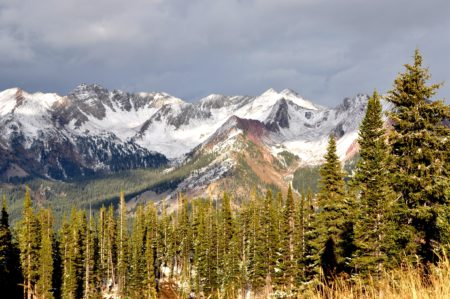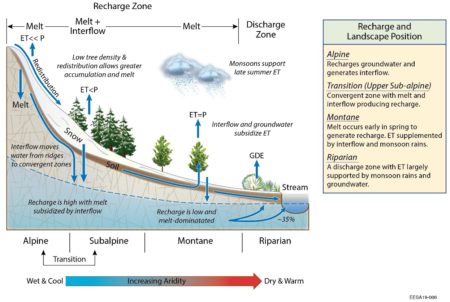
Figure 1: Landscape gradients in topography, aridity and ecotones within the East River, Colorado establish groundwater recharge mechanisms as a function of landscape position.

Figure 2. Conceptual model of water fluxes across landscape gradients to highlight dominant mechanisms of recharge. The transition zone is the upper subalpine and GDE = groundwater dependent ecosystem.
LiDAR-derived snow observations are combined with an integrated hydrologic model to quantify spatially and temporally distributed water fluxes across varying climate conditions, and to understand the sensitivity of groundwater generation to snow dynamics, vegetation, and topography in a Colorado River headwater basin.
The results of this work indicate that snowmelt is focused via interflow from steep, mountain ridges into the upper subalpine where slopes flatten and sparse conifer forests begin to grow. This mechanism of recharge appears resilient to drought and may buffer recharge under climate change. Seasonal snowmelt and water use by plants regulate small recharge rates in the lower elevations of this mountainous basin. Understanding the key mechanisms of groundwater recharge in headwater basins allows scientists to better predict headwater stream responses to precipitation changes, thereby improving water and environmental management.
Summary
Accumulated snow in mountain basins is a critical water source but little is known about how groundwater is influenced by changing snowpack. Airborne observations of mountain snowpack are combined with a physically-based hydrologic model to better understand how snowmelt is partitioned across the landscape and routed to streams. Results indicate that groundwater is an important and stable source of water to a mountain stream, with the relative fraction of groundwater increasing during drought as a function of increased plant water use and decreased lateral soil water flow (called ‘interflow’). The study finds that the dominant mechanism generating groundwater is topography. Specifically, snowmelt is focused via interflow from steep mountain ridges into the upper subalpine. This mechanism of recharge appears resilient to drought. Lower in the basin, snowmelt occurs before peak vegetation water use to allow for some groundwater generation. Interflow and monsoon rains then subsidize plant water use once snowmelt ceases but do not generate substantive recharge.
Citation
R. W. H. Carroll, J. S. Deems, R. Niswonger, R. Schumer, and K. H. Williams, “The Importance of Interflow to Groundwater Recharge in a Snowmelt-Dominated Headwater Basin”, Geophysical Research Letters, 46. (2019). DOI: 10.1029/2019GL082447
